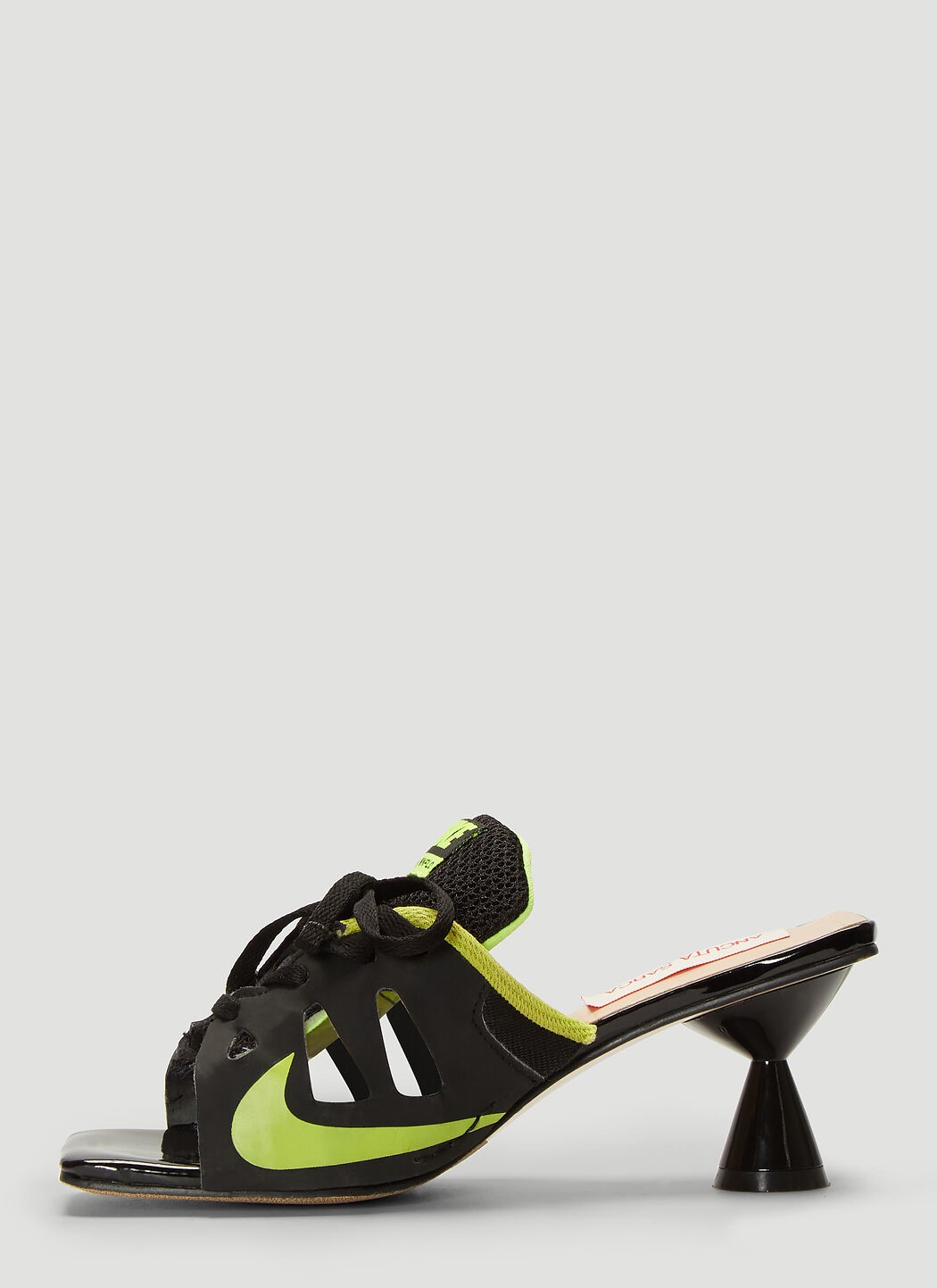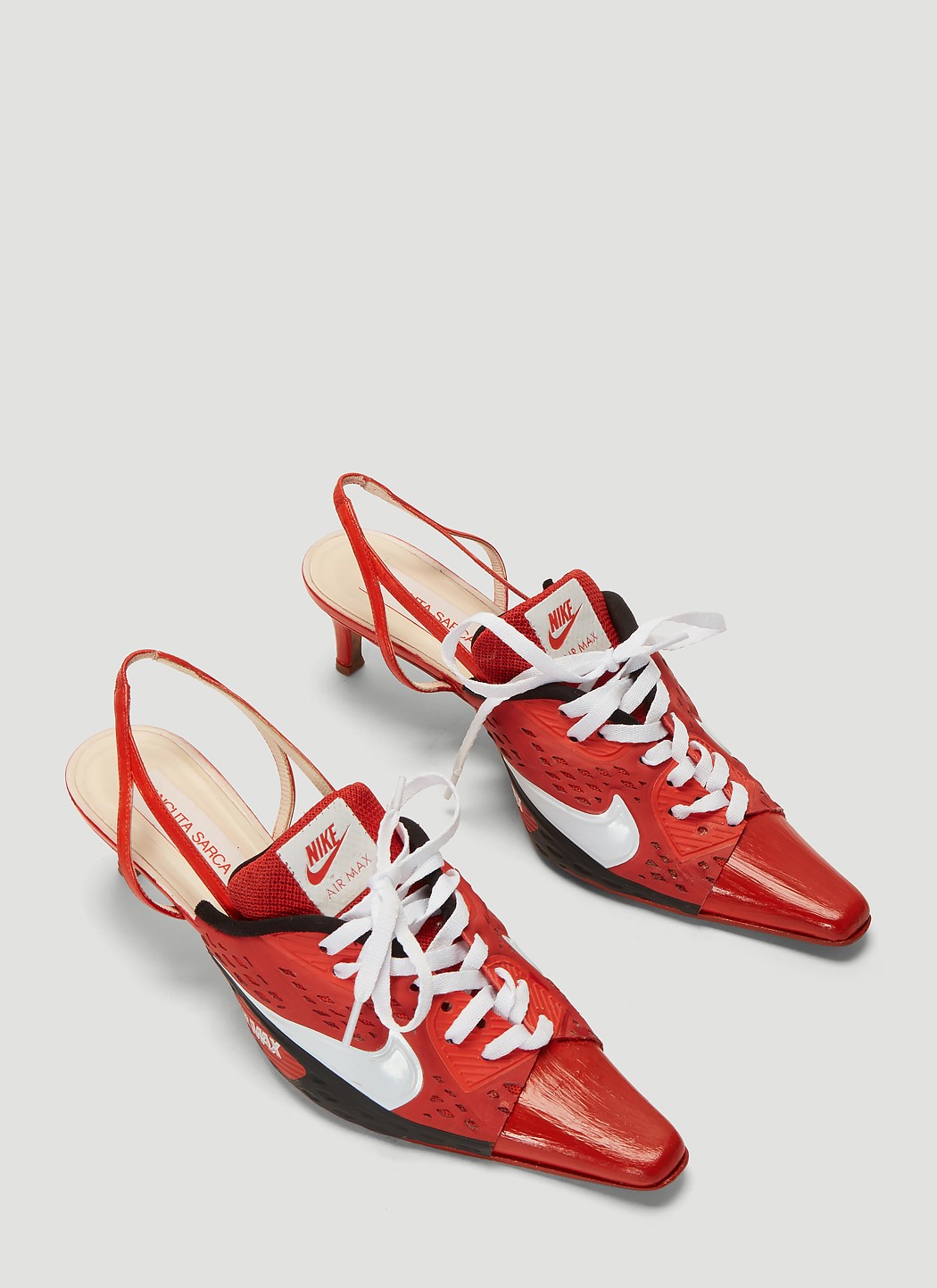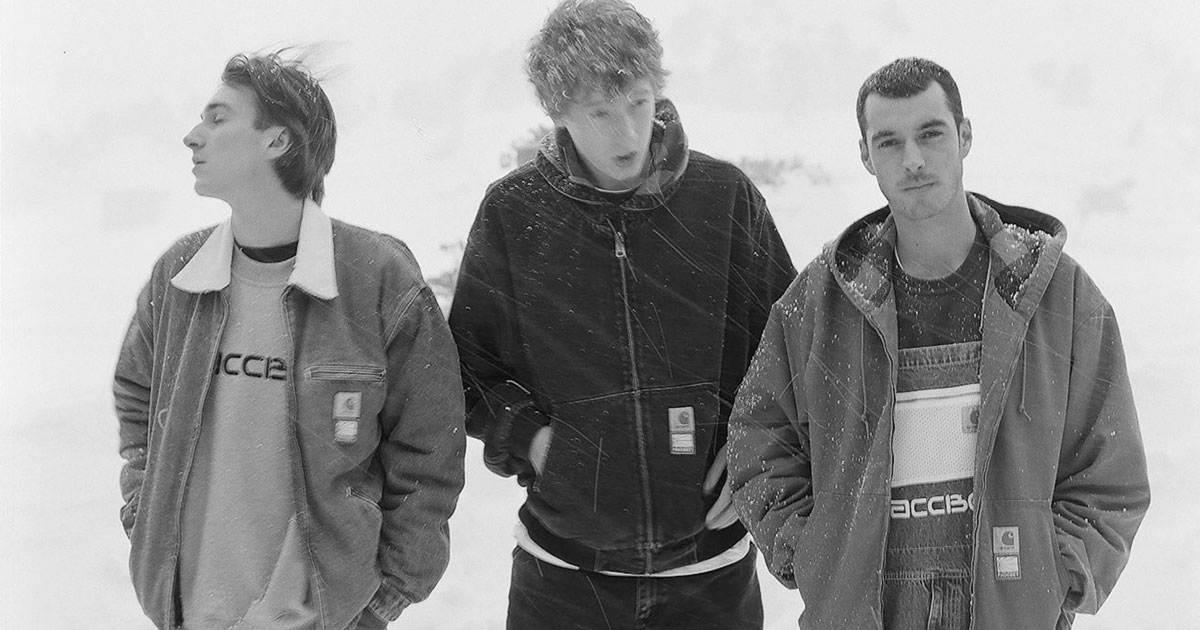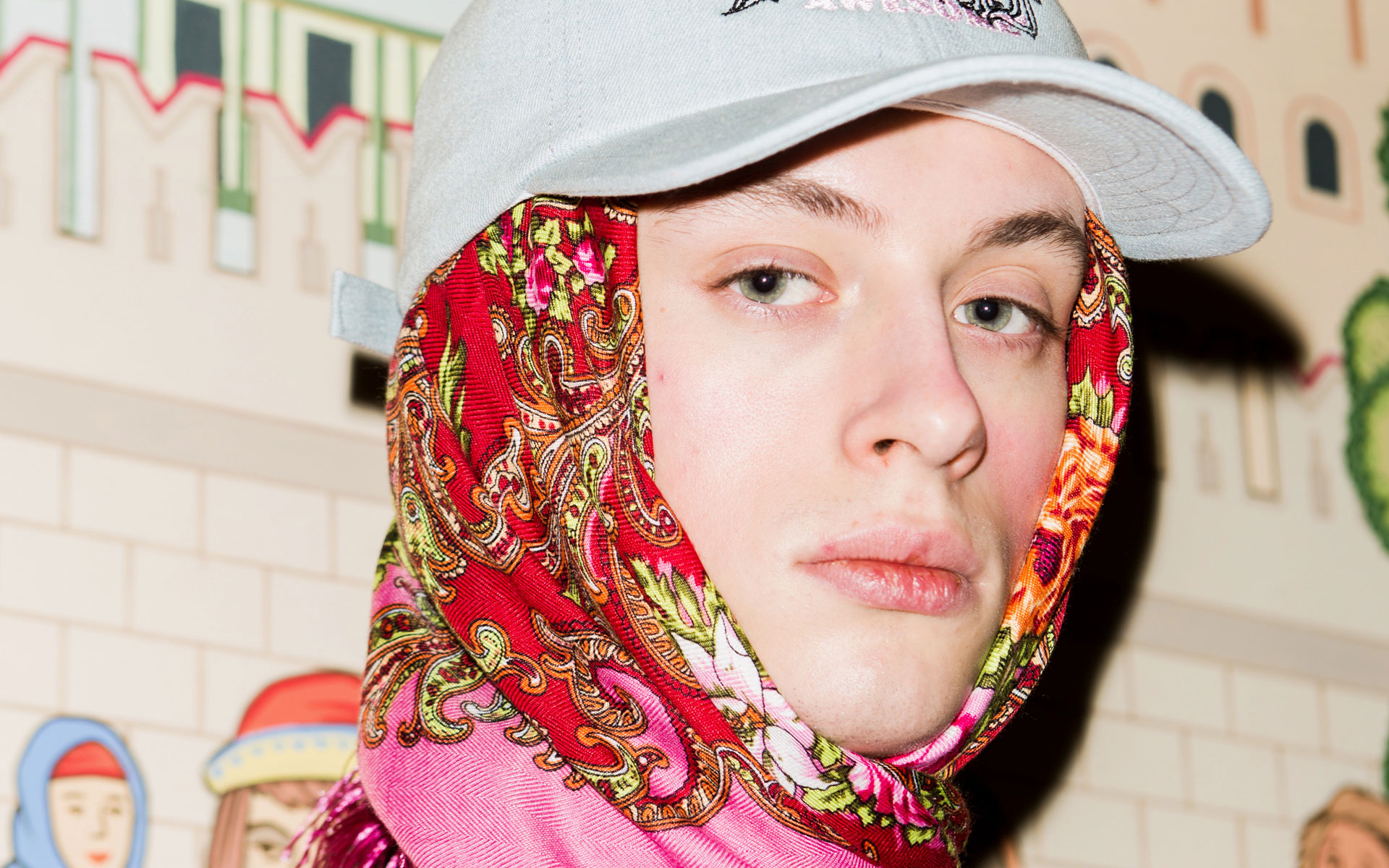Ripoff fashion ruled Eastern Europe’s label-hungry 90s. Why are designers celebrating it now?
Knock-offs have been aspirational in countries like Russia and Albania long before they started cropping up on runway shows at major fashion capitals of the world. Whether you consider them craft or clutter, what can they teach us about Eastern Europe?
If the word “Abibas” conjures nothing more than a cringeworthy spelling mistake, then you probably didn’t grow up in 90s Russia. If you did, the image of knock-off Adidas sliders might evoke a sudden rush of nostalgia; the same with the Bounty bars, bubble gum, and Big Macs that first arrived during the same decade. In a time when the world was still divided by the Iron Curtain, these were everyday consumer products in West; for the Eastern Bloc, they were forbidden delights. As socialism collapsed and capitalism spread eastward, people started snapping up branded garments, even before the big fashion houses had a chance to move in.
Suddenly, counterfeit and bootleg products were everywhere. To this day, you can find plastic bags emblazoned with logos from Burberry, Gucci, and Prada being sold outside metro stations in cities like Kyiv. Loved and collected by headscarf-sporting babushkas, who use them either for lugging groceries or wrapping gifts, in recent years they’ve also become popular souvenirs for young trend-setters visiting from Europe and the US. In many New East markets and bazaars, folk and fake wares are sold right next to each other. This begs the question: should we consider these knock-offs as a part of our cultural heritage?
Historically, luxury fashion has always turned its nose up at bootleg. So when Demna Gvasalia revealed that he’d ripped-off copyrighted logos for the Vetements’ 2016 spring/summer collection, the designer was praised as a rebel. But logos have been Gvasalia’s trademark from the beginning. The brand’s signature DHL t-shirt sparked a subversive trend for designer items that just happened to look like fakes. With his work at Balenciaga, he continued to mix “high” and “low” culture by bringing everyday items onto the runway (who can forget that £1,600 bag which could have been lifted from IKEA?).
“During the Soviet era, jeans and trainers were not so much objects as they were symbols of an unattainable lifestyle”
Gvasalia’s affinity for bootleg was never just a gimmick: it had deep roots in his native Georgia. For Gvasalia and his contemporaries — Gosha Rubchinskiy is another Eastern European designer responsible for bringing bootlegs onto the runway — fakes were their first entry point into the world of fashion. Now they serve as nostalgic mementos for the 90s: when possessing a DHL t-shirt or equivalent would have been aspirational, even if it was fake. The ingenuity at the core of Gvasalia and Rubchinskiy’s vision was selling fake-looking items to the luxury fashion world they were once isolated from — at a hefty price tag, to boot.
“When you look at the ironic usage of fakes or bootleg among young people in Western metropolises, it comes from a position of privilege”
Anastasiia Fedorova is the Russia-born curator behind The Real Thing, a London-based exhibition celebrating the legacy of bootleg fashion across the world. (She’s also Strategy and Partnerships’ Manager and writer at The Calvert Journal.) She draws comparisons between today’s hype culture and the logomania that swept the former Eastern Bloc in the 90s. “During the Soviet era, jeans and trainers were not so much objects as they were symbols of an unattainable lifestyle. Throughout the 90s, owning a certain pair of trainers made you feel as if you belonged to a certain world or community. The same thing could be said of our brand-obsession today.” Her own interest in fashion started with a pair of fake Versace trousers belonging to her mother, which featured a Medusa’s head embroidered in gold thread.
During the 90s, knock-off Gucci and Versace jeans and belts would have been sold next to fur coats and TVs at markets. Even today, whether you’re in Moscow or Chelyabinsk, bootlegged produce continues to have relevance in post-Soviet countries, where the fact that these brands were once so inaccessible — even forbidden — mean that they possess a certain allure you cannot find in similarly priced shops on the high street.
With The Real Thing, Fedorova wanted to use the faux fake trend as a springboard for talking about issues that went unexplored in the countless fashion think-pieces on the rise of bootleg, such as the geopolitics of counterfeit products. Social anarchy — the idea that fakes can interfere with power structures — is central to the The Real Thing exhibition. Though Gvasalia and Ruchninskiy are recognised as the radical force behind the trend, the show was not meant as an homage to them. As Fedorova explains: “I wasn’t interested in the work which came from big brands, I wanted to go beyond the Western gaze and focus much more on independent artists and collectives from various parts of the world.”
As with cultural appropriation, another divisive topic in the fashion industry, the conversation around bootlegging can be a frustratingly messy affair. Big brands, even those led by the Demna Gvasalias and Gosha Rubchinskiys of the world, have a tendency to take from the bootleg industry while denying it both space and credit. It was big news when Gucci copied a 1980s jacket design by New York bootlegger Dapper Dan. Vetements also played its part, by staging a fake counterfeit store in Seoul, South Korea in 2016.
Anna Ehrenstein is one artist who is interested in the ways counterfeit objects are interwoven into the urban landscape. For the show, she presented two projects: Tales of Lipstick and Virtue, which explores the notion of pseudo luxury in her native Albania, and Capitalocene Safari Collage, focusing on Western tourists who travel to China to nab bargains in “backdoor shopping rooms”. Ehrenstein’s family moved from Albania to Germany in the 90s; while her mother got a working visa, her father and uncle found it difficult to secure refugee status. After her parents split, Ehrenstein stayed in Germany with her mother, but effectively grew up across two cultures and two sides of Europe. It gave her a unique understanding of how beauty, luxury, and authenticity are perceived differently across cultures, she says.
“These brands cost a crazy price and 99 per cent of people in Uzbekistan cannot afford to buy them”
“My first memory of branded clothing would be from the Vogue magazines that my mum would buy in Germany,” Ehrenstein recalls. “Like many other migrant single mothers, she needed to be very aspirational to survive and she always wanted her daughter to be visually surrounded by what felt like would be the best influences on her.” In Albania meanwhile, where designer goods are harder to come by, people are much closer to the production, distribution, and consumption of fake textiles — something that means that they do not care whether the garment they are wearing is trademarked by another brand. For Ehrenstein, the question isn’t what is real and what is fake: rather who can afford to wear both.
“The majority of people buying counterfeit textiles, like at the Grand Bazaar in Istanbul, are actually Western tourists looking for a nice fake bag.” She points out there is still a double-standard when it comes to bootlegs and fakes, even if they have been normalised by recent trends: whether you’re a bargain-hunter or fashion-savvy traveller, as a tourist, you are still souvenir shopping.
“When you look at the ironic usage of fakes or bootleg among young people in Western metropolises, it comes from a position of privilege. Of course, there are a lot of hip folks in Albania who’ve enjoyed fashion’s recent games with fake branding, but the majority of people still use fake branding to access some kind of status they would usually not have.”
Piece of Cake by Anna Ehrenstein
Even with magazines like Vogue US and Highsnobiety writing about flea market hauls in Tbilisi (including advice on where to find the best fakes), luxury is more important for young people in non-Western countries than ever before. Uzbek photographer Hassan Kurbanbaev placed those teenagers at the heart of his staged photo series Logomania: Owning the World at Half Price, inspired by counterfeit produce sold at bazaars in Tashkent and Samarkand. “Young people want to imitate the luxurious life they see on Instagram, so they are striving to be fashionable,” he says. Instead of using professional models, Kurbanbaev decided to street-cast, bought all the outfits, and styled it himself. The photo of three girls donning velour Dolce and Gabbana tracksuits was shot near a large Tashkent bazaar called Chorsu. The project is about something more than fashion — for Kurbanbaev, fakes were a way to talk about a larger crisis of national identity gripping Uzbekistan.
“I watched for some time as these luxury brands invaded our lives and became part of the local concept of fashion or luxury. You walk on the street and see a woman with a plastic Gucci bag, or hundreds of Chanel pillowcases, at the bazaar. It’s a strange picture, because you understand that these brands cost a crazy price and 99 per cent of people in Uzbekistan cannot afford to buy them. So it’s important to ask: where has this come from?”
From Logomania by Hassan Kurbanbaev
“For me, the entire series is not limited to logos,” Kurbanbaev continues. For the purpose of this interview he forwarded me photos of monogrammed “designer” shower heads and slippers which he often posts on his Instagram, along with renovated building facades which have been copied to mimic Western architecture. “Through brand obsession, architecture copies, and plagiarism, I’m trying to understand the state of my country and what this will lead to.”
Counterfeit and bootlegged goods will probably never be thought of as national treasures. That is not to say they don’t deserve to be, but the reason that bootlegging spread so quickly among fashion circles is that it has now truly broken through national barriers. Whether they live in London or Lviv, everybody has come across a fake or bootlegged bag. “At the height of Vetements, branding was becoming a language of its own,” says Fedorova. Monogram emblazoned accessories are no longer confined to consumerism-starved nations in transitions, but everywhere. A deluge of Instagram filters which smother faces in brand names have taken over the digital world, as well as the analogue. On the surface, logos have painted the world bland. But it is how these symbols talk about our differences that ultimately draws artists in — and the gulf between the haves and have-nots is something that no amount of Burberry check can cover up.



